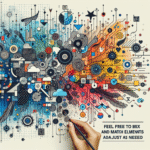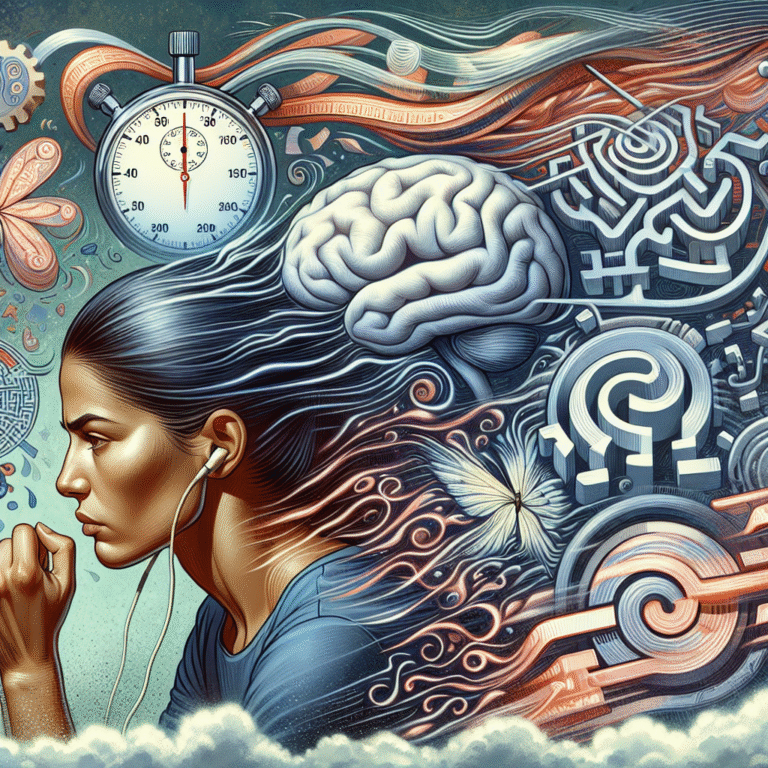
Introduction
In a world oversaturated with advertisements, how do brands manage to capture our attention and influence our purchasing decisions? The answer lies in a psychological principle known as classical conditioning. Marketers have long been aware of how emotions and associations can drive consumer behavior, leading to the effective use of classical conditioning in advertising strategies. This article explores how advertising uses classical conditioning to influence consumer behavior, providing you with valuable insights backed by real-world examples and data.
Understanding Classical Conditioning
Classical conditioning is a learning process that occurs through associations between an environmental stimulus and a naturally occurring stimulus. First popularized by Ivan Pavlov in the early 20th century, this psychological concept reveals how we can learn to associate certain stimuli with specific responses. In essence, when a neutral stimulus is paired repeatedly with an unconditioned stimulus, it eventually elicits a conditioned response.
How It Applies to Advertising
In the context of advertising, brands often pair their products with stimuli that evoke positive feelings. Over time, consumers develop a conditioned response to the product, leading them to associate it with feelings of happiness, nostalgia, or comfort. This is an essential strategy for marketers who aim to influence consumer behavior.
Key Elements of Classical Conditioning in Advertising
- Unconditioned Stimulus (UCS): A stimulus that naturally triggers a response. For example, the smell of freshly baked cookies.
- Unconditioned Response (UCR): The natural reaction to the unconditioned stimulus. For example, the feeling of happiness when smelling those cookies.
- Conditioned Stimulus (CS): A previously neutral stimulus that, when paired with the UCS, comes to trigger a conditioned response. For instance, a brand logo paired with the smell of cookies.
- Conditioned Response (CR): The learned response to the conditioned stimulus. Over time, seeing the logo may elicit the same happiness as smelling cookies.
The Power of Emotional Appeals
Case Study 1: Coca-Cola and Christmas
Coca-Cola has expertly utilized classical conditioning by associating its brand with the festive spirit of Christmas. The iconic red and white brand colors are often coupled with images of warmth, connection, and happiness during the holiday season. A study by the Journal of Advertising Research found that 71% of consumers felt a stronger emotional connection to Coca-Cola because of its holiday marketing campaigns.
Analysis
By integrating positive emotional experiences with their product, Coca-Cola demonstrates how advertising uses classical conditioning to influence consumer behavior effectively. The conditioned response—the feeling of joy associated with Coca-Cola—makes consumers more likely to purchase during the holiday season.
Table 1: Emotional Connections in Advertising
| Brand | Unconditioned Stimulus | Conditioned Stimulus | Conditioned Response |
|---|---|---|---|
| Coca-Cola | Christmas imagery | Coca-Cola logo | Happiness and a sense of belonging |
| Nike | Athletic achievement | Nike swoosh | Motivation and empowerment |
Leveraging Nostalgia in Advertising
Case Study 2: Apple and Childhood Memories
Apple’s advertisements frequently evoke nostalgia, using classic songs or familiar imagery from past decades. Their "Think Different" campaign successfully paired the Apple logo with powerful cultural icons and moments that consumers fondly remember.
Analysis
Through how advertising uses classical conditioning to influence consumer behavior, Apple has effectively created brand loyalty. When consumers hear a nostalgic tune in an Apple ad, it stirs feelings of comfort and familiarity, increasing the likelihood of purchase.
Creating Brand Loyalty Through Repetition
Repetition as a Conditioning Technique
Repetition plays a crucial role in classical conditioning. The more a consumer is exposed to certain stimuli paired with positive experiences, the stronger the association becomes.
Case Study 3: Geico’s Use of Replicated Brand Messaging
Geico has long implemented humor and catchy slogans in their advertising. The lizard and memorable lines like "15 minutes could save you 15% or more" have become ingrained in consumer consciousness.
Analysis
By frequently employing these elements, Geico ensures that when consumers think about car insurance, they also think of fun, light-hearted content. This approach is a clear demonstration of how advertising uses classical conditioning to influence consumer behavior, creating a positive brand image.
Visual and Auditory Elements
The Role of Sensory Marketing
Advertising also employs visual and auditory elements to evoke emotions effectively. Engaging visuals, paired with sound designs that resonate with the audience, are essential components of successful campaigns.
Case Study 4: McDonald’s Jingles
McDonald’s "I’m Lovin’ It" jingle is instantly recognizable and has become synonymous with the brand itself. The combination of catchy melodies and a happy atmosphere has conditioned consumers to associate McDonald’s dining experience with joy and satisfaction.
Analysis
This is another prime example of how advertising uses classical conditioning to influence consumer behavior. The repetitive exposure to both the jingle and the warm visuals creates a conditioned response in consumers, prompting cravings for McDonald’s food.
The Science of Color Psychology
The Impact of Colors on Consumer Perception
Colors play a crucial role in advertising, influencing emotions and perceptions. Research indicates that color can elevate consumer experiences and responses.
Case Study 5: The Color Red for Excitement
Red is often associated with excitement, passion, and action. Brands like Target and Coca-Cola effectively utilize red in their branding to evoke urgency and encourage impulse purchases.
Analysis
This deliberate choice of color showcases how advertising uses classical conditioning to influence consumer behavior. The excitement generated by red can lead to quick decision-making and increased sales.
Conclusion
Understanding how advertising uses classical conditioning to influence consumer behavior is vital for both marketers and consumers. By leveraging emotional appeals, repetition, sensory marketing, and color psychology, brands can create powerful associations that drive consumer loyalty and purchasing decisions.
As consumers, being aware of these psychological techniques can empower you to make more conscious choices about the brands you engage with. The connection between our emotions and our buying habits is profound, and recognizing that can lead to more empowered purchasing.
FAQs
1. What is classical conditioning in advertising?
Classical conditioning in advertising is a psychological technique where brands create associations between their products and positive stimuli to influence consumer behavior.
2. How can I identify classical conditioning in ads?
Look for recurring themes, emotions, or symbols paired with a product. For example, joyful imagery or music might accompany a certain brand.
3. Can classical conditioning be reversed?
Yes, this is known as extinction. If the unconditioned stimulus stops being paired with the conditioned stimulus, the learned response will diminish over time.
4. Why is repetition important in advertising?
Repetition strengthens the associations consumers make between the product and the positive stimuli, increasing the likelihood of purchase.
5. How can I be more aware of advertising techniques?
Being conscious of your emotional reactions to ads can help. Take note of what feelings certain brands evoke to better understand how classical conditioning is at play.
This comprehensive exploration underscores just how effective classical conditioning can be in the world of advertising. Through various strategies, brands can not only attract but also retain customer loyalty, reshaping how we think about consumer behavior—one advertisement at a time.














